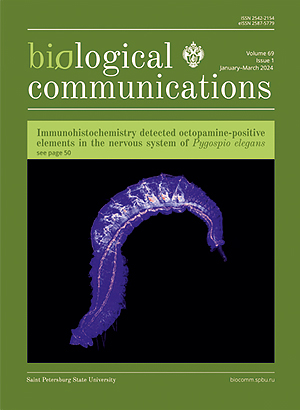Influence of growth regulators on microclonal propagation of Scrophularia umbrosa Dumort under in vitro conditions
DOI:
https://doi.org/10.21638/spbu03.2024.101Abstract
The possibility of effective microclonal propagation of Scrophularia umbrosa Dumort for producing planting materials, aimed at preservation of the species has been shown. This will aid in the creation of artificial introduction populations of this endangered species in the Republic of Tatarstan, Russia. Optimal conditions for surface sterilization of seeds, development of microshoots, in vitro rooting and acclimatization have been developed. The most effective surface sterilization and germination was achieved with 10 % commercial bleach. Nodal explants were cultured in Murashige and Skoog’s (MS) medium with different concentrations of 6-benzylaminopurine (BAP) and indole-3-acetic acid (IAA). The maximum number of microshoots was developed on MS medium containing 1.0 mg/l of BAP and 1.0 mg/l of IAA. Full strength MS medium with only IAA or together with (indole-3-butyric acid) IBA is optimal for rapid rooting of microshoots. The combination of soil: perlite (2:1) (v/v) was the best for ex vitro acclimatization of plantlets.
Keywords:
micropropagation, S. umbrosa, surface sterilization, microshoot, morphogenesis, rhizogenesis, acclimatization
Downloads
References
Downloads
Published
How to Cite
License
Articles of Biological Communications are open access distributed under the terms of the License Agreement with Saint Petersburg State University, which permits to the authors unrestricted distribution and self-archiving free of charge.





